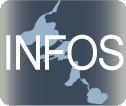Rainfall
Archived Rainfall
| NEXRAD Level II | ||
|---|---|---|
Date |
Intensity |
Cumulative |
06/07/08 - 06/08/08 |
||
09/27/09 |
||
| NEXRAD Level III | ||
|---|---|---|
Date |
Intensity |
Cumulative |
06/07/08 - 06/08/08 |
||
09/27/09 |
||
About NEXRAD
The WSR-88D Next Generation Radar or NEXRAD system was put in place in the late 1980s in order to provide advanced warning of weather related hazards. The data from this system is archived on a continuous basis and is made available to the public by the National Oceanic and Atmospheric Administration's National Climatic Data Center. Many popular web services show NEXRAD radar in various forms in real time with some archives of limited detail. The full archive; however, is not readily displayable. This, and other issues prompt the need for particular cities, counties, or watershed authorities to archive storms of interest for various reasons, analysis of scenarios that took place as a result of these extreme events, calibration of models, etc.
Radar data exists in three flavors. Level I which is in the form of raw electromagnetic waves. This data would be visible on an oscilloscope at the radar station only. Level II data is processed into a format that can be archived digitally and readily mapped into a spatial context. The grid that Level II radar is presented on is in polar stereographic coordinates in 0.5 deg X 0.25 km resolution. In the third dimension, Level II data exists as many elevation angles to form a semi-spherical system of data. For the purposes of rainfall, we are interested only in the lowest elevation angle, normally about 0.5 degrees. Level III radar data is post processed by the Radar Operations Center and represents numerous atmospheric phenomena from relative and absolute wind speeds to rainfall intensity and accumulation.
In simple terms, rainfall emits an electromagnetic wave and listens for an echo. The level of intensity of the echo returned tells the radar something about the amount of water in the atmosphere. Unfortunately, it doesn't tell us how big the particles of water in the atmosphere are. In order to know the precise relationship between radar echo strength (or reflectivity) and rainfall rate, we need more information than reflectivity. Mathematically, this rises because the known relationship between rainfall intensity and reflectivity is of the form Z(reflectivity) = A(some constant) * R(rainfall rate) ^ b(some power)
In practice, ie level three data transformations, the values of A and b are assumed for given types of rainfall and the products published are given as estimates only. The accuracy of these data is practically impossible to verify without more information like rain gages. This means that the readily available level III estimates that are available from numerous sources are likely in error, by how much you ask? Anywhere from about a factor of 0.25 to a factor of 3. Usually they are quite close though.
Another issue of concern is data quantitative and spatial resolution. Depending on your application, you may want high spatial resolution and or you may require high quantitative resolution. (Quantitative resolution refers to the number of possible values a given radar pixel can take on.) A number of level III rainfall estimates, hourly accumulation, three hour accumulation, and storm total accumulation are given as four bit quantitative resolution (16 possible data values) and roughly 0.5 km spatial resolution. While one level III product is given as 8 bit (256 possible data values) and 4 km spatial resolution. These products are of low resolution either in space or quantity primarily for data transfer bandwidth limitation reasons.
The solution to this problem of low quantitative resolution is to go to the source data and conduct the transformation from reflectivity to rainfall intensity. Level II reflectivity is high resolution and is available at the full radar spatial resolution. The difficulty is that the radar operation center has numerous routines to clean artifacts and noise from the that may or may not be implemented in a code developed by a third party.
The animations presented here give examples of a level III product with low quantitative resolution, note the noticeable steps in the color-maps, and level II transformation assuming the default national weather service A and b for the Z-R relationship.
Additional NEXRAD links
- Weather underground has a real time utility and some limited archives of radar images. Check out the "advanced radar types" tab on the left hand side.
- The Radar Operations Center has a wealth of information concerning the NEXRAD system.
- The NCDC is the source for all archived NEXRAD data.






